Wringer and Mangle is a beautiful new space tucked around the corner from London Fields. They’re currently hosting a series of supper clubs curated by food journalist Victoria Stewart, showcasing the best of East London produce. On the night we were there it was being run by Rosie Birkett whose debut cookbook A Lot on her Plate is out now.
We kicked things off with a Square Root rhubarb soda and Our London vodka cocktail, both of which are made in Hackney. I adore rhubarb and would have liked the flavour from the soda to be even stronger, it was quite delicate.
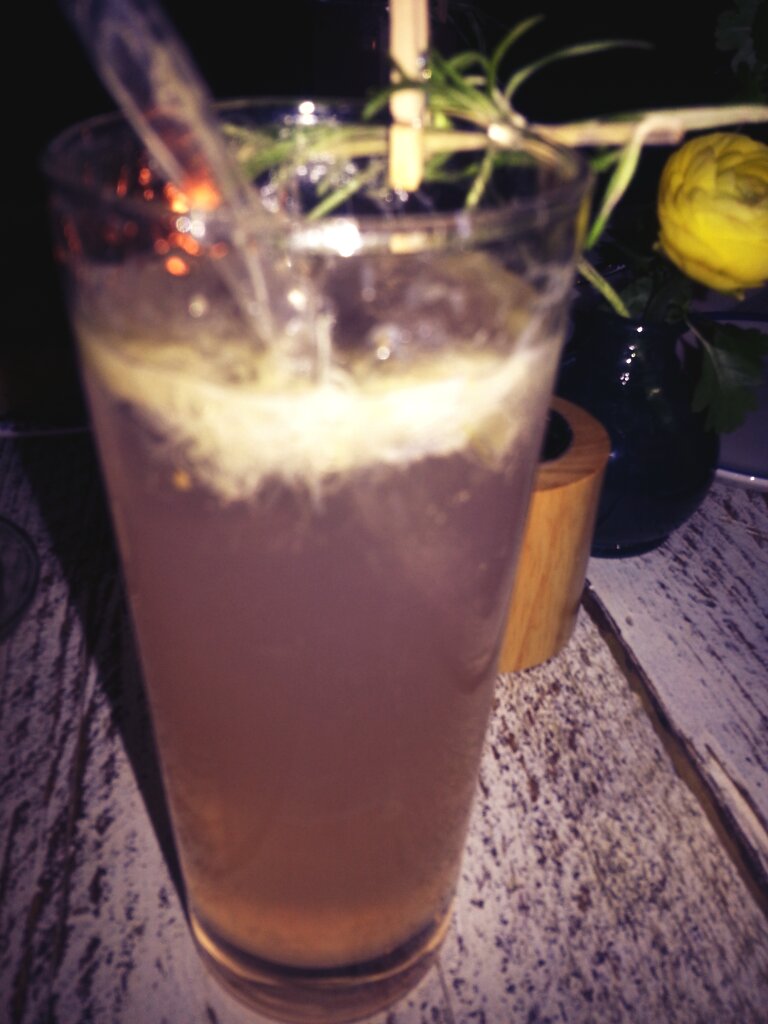
Whilst we waited for our starters we nibbled on the E5 Bakehouse sourdough bread. Just eating good bread makes you realise what a debased product so much of the so called “sourdough” sold in supermarkets really is. This was full of delicious fermented flavour and wonderfully chewy and crusty.
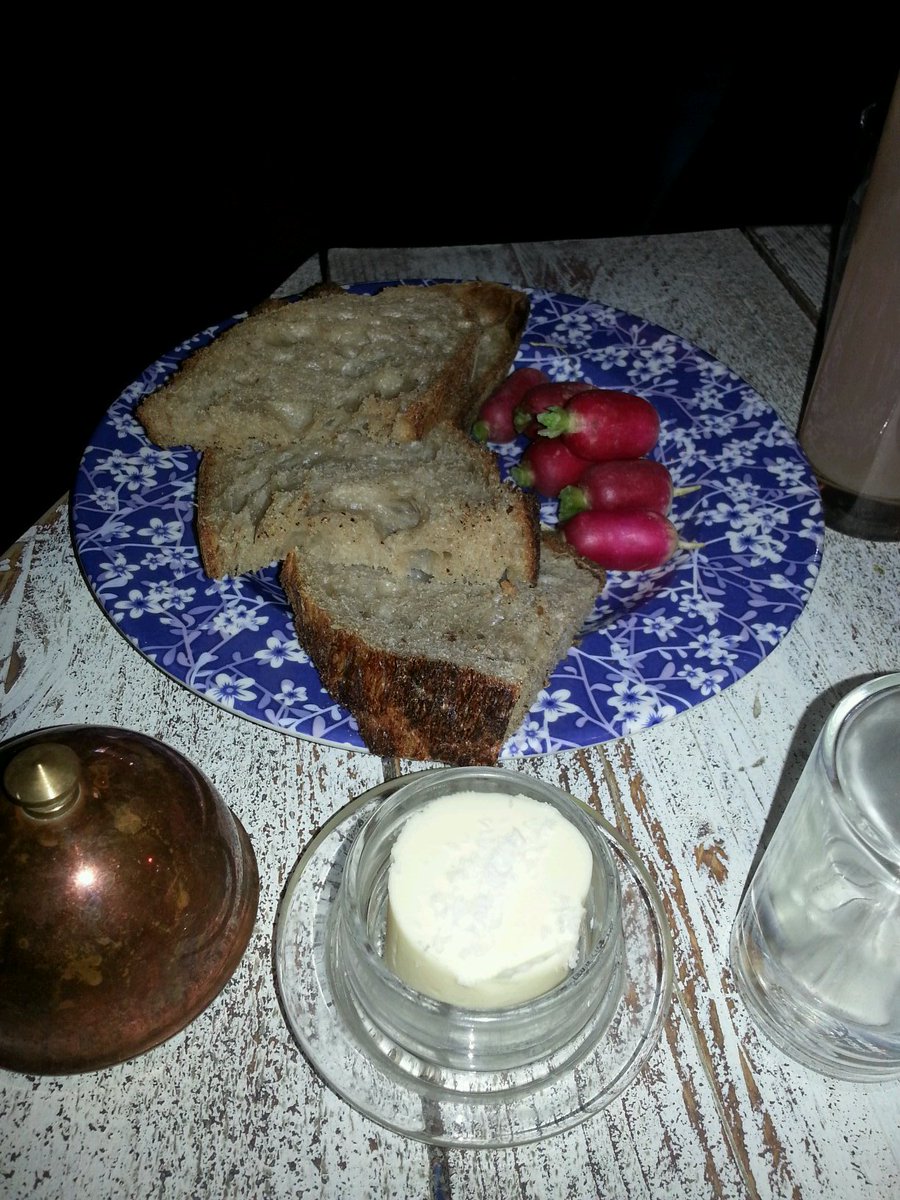
Starters were Fin and Flounder’s smoked eel, beetroot jelly and pea shoot salad. Normally I’m not a huge fan of eel but look at this, pretty as a picture! And I have to say this dish really converted me to eel and all flavours and textures worked so well together.
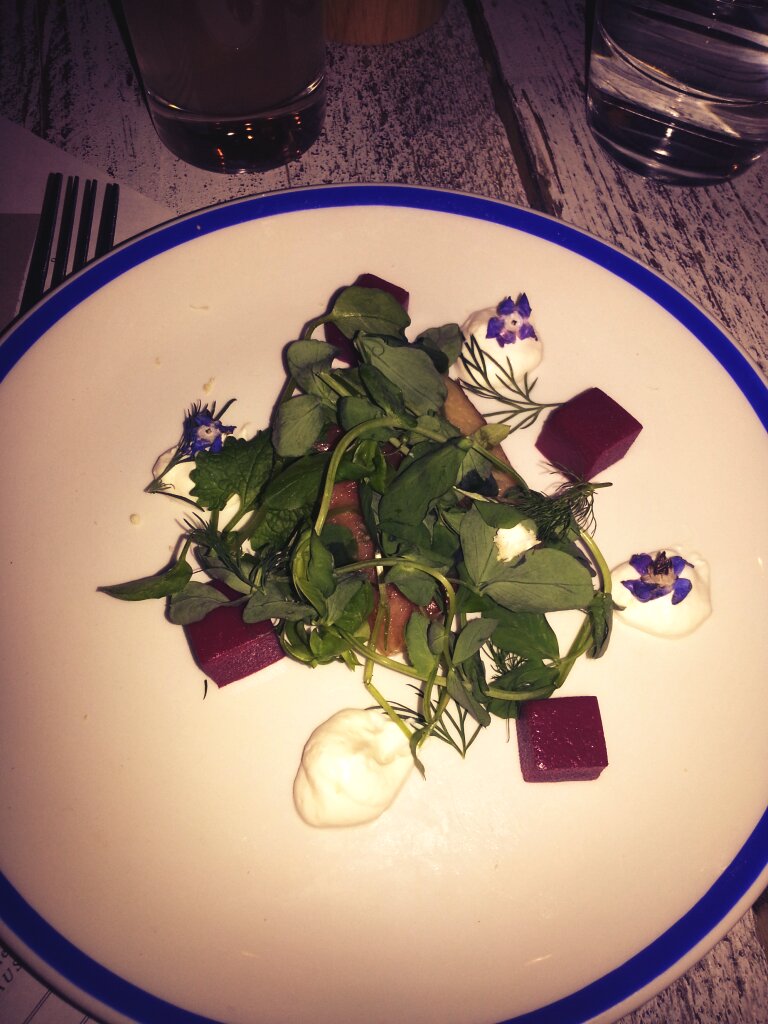
Then the main course and what a main course! Hills and Srok beef shin pie, olive oil mash and wild garlic “liquor”. Looking like something Desperate Dan would eat, a huge pie with a giant marrowbone sticking out of the centre like the worlds’ best chimney. And I can vouch that this was a PROPER pie with pasty above and below, not those lid only imposters! Full of the deep aged flavour that you get from slow cooking good meat this was a stunner. I will definitely be making a trip to Hills and Srok butchers to try and recreate this for myself.
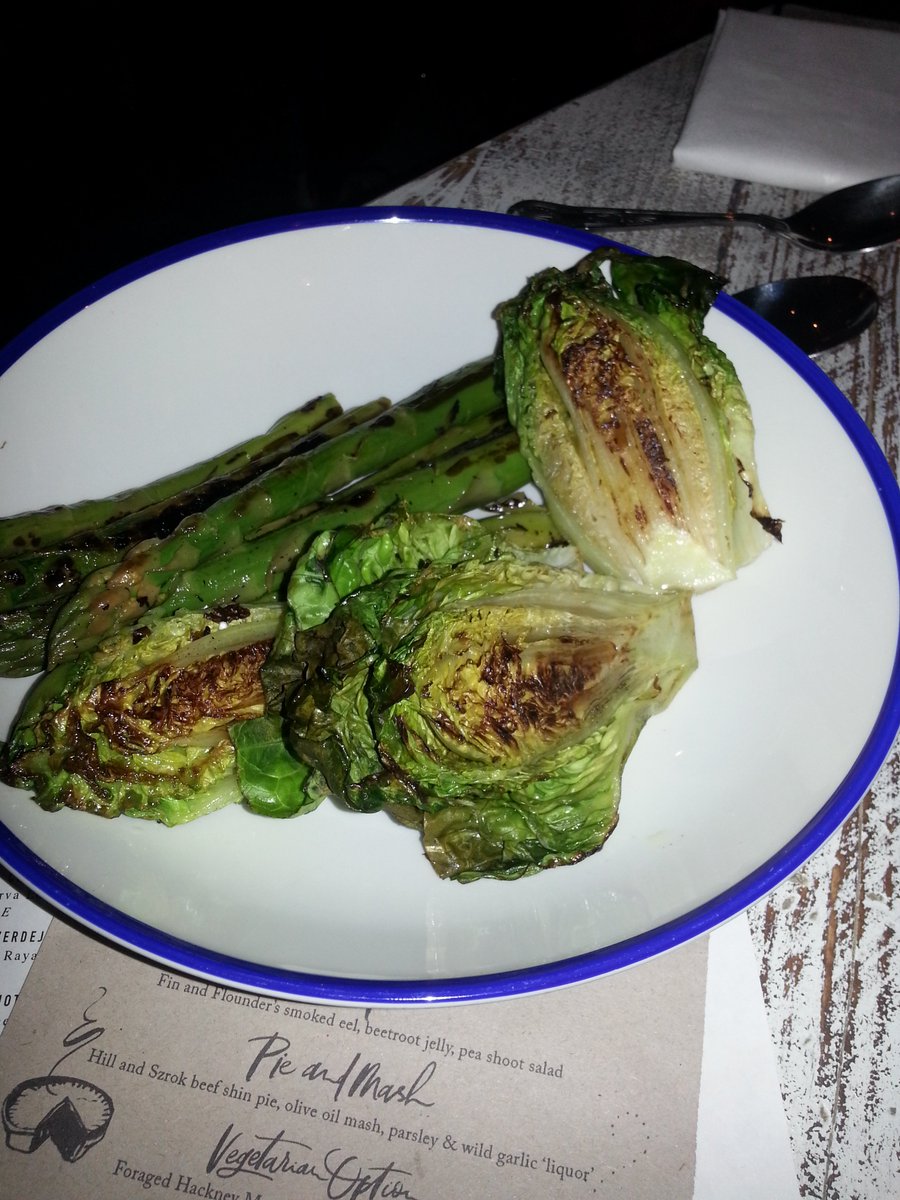
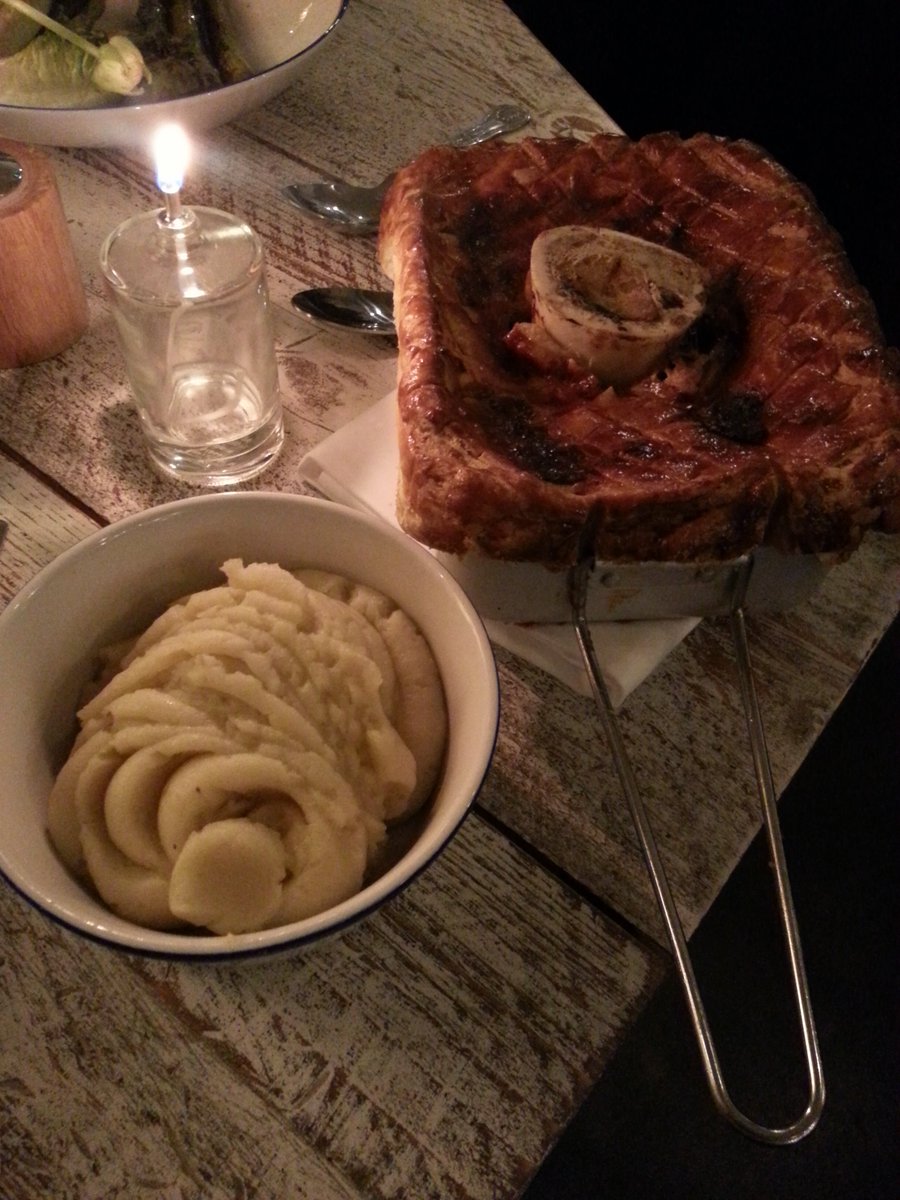
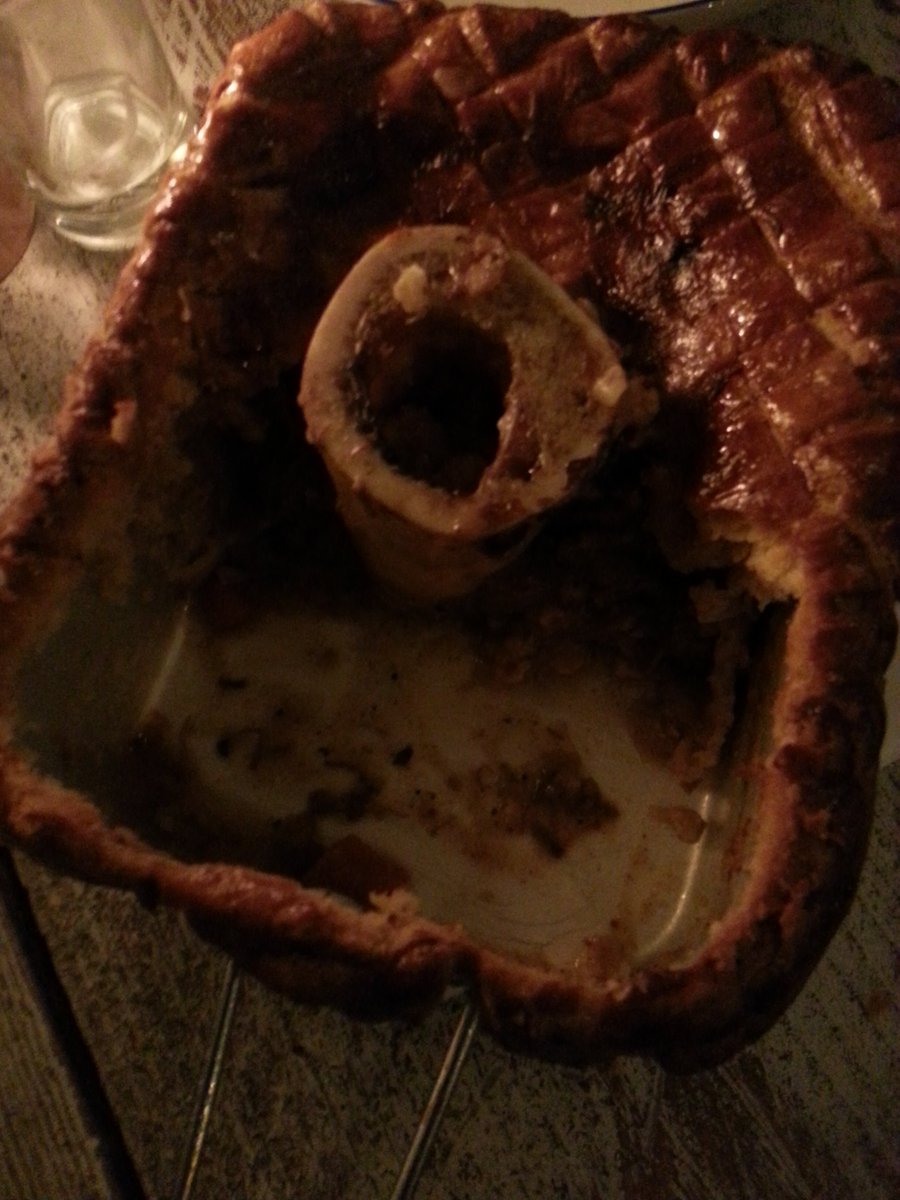
We finished off with a salted butterscotch popcorn cheesecake, we were quite full at this point so couldn’t really do it justice, but I liked the way the salty crunch of the popcorn contrasted with the silky smoothness of the cheese.
The supperclub is running every Tuesday night for the next 6 weeks featuring a variety of different cuisines including Persian, check out the upcoming dates here:
JURAGAN69: Situs Slot Online Travel Gacor Gampang Menang Hari Ini
I did also notice that Wringer and Mangle had a really nice outside terrace so if summer ever decides to make a reappearance it would be a lovely spot to while away a evening!
Twitter:

About goantolondon
International food and travel blog by London based British Goan duo: Jason and Chiara Pinto.
Twitter:
@goantolondon
@jasonpinto100
@chiarapinto
About Goa:
Goa is a small state on the western coast of India. Though the smallest Indian state, Goa has played an influential role in Indian history. Goa was one of the major trade centers in India, thus it had always been attracting the influential dynasties, seafarers, merchants, traders, monks and missionaries since its earliest known history. Throughout its history Goa has undergone continual transformation, leaving an indelible impression on various aspects of its cultural and socio-economic development.
History of Goa:
The East-West symbiosis of Goa makes it different from other parts of India, more than the historical and social niche. The history of Goa is a sweet and sour story of colonial heritage, oppressive rulers, a glorious culture, and uneventful immediate past.
As a land with the identity of its own, Goa was brought into focus when it was liberated of Portugal from its oppressive rule of around 450 hundred years in 1961. Goa was captured and annexed to the Portuguese in 1510 following the urges of trade and demand of spices and also cottons and indigo. But, Goa has a history that starts much before Portugal even thought of Goa being where it is.
Goa was coveted and ruled by a great number of Indian kingdoms and dynasties from the 4th century onwards. The first kingdom to rule Goa and Konkan were Bhojas, who were the feudatories of Ashoka in 4th and 5th centuries AD. The city of Chandrapur (present Chandor) was founded by Prince Chandraditya, son of Chalukya King Pulakesin from 566 to 597 A.D. after this, Goa was ruled consecutively by Silahara Dynasty, Kadamba Danasty, and finally Hoysalas from 1022 to 1342 A.D.
From the 14th century onwards, Goa became a great trading center on the west coast, especially in the vast trade of horses imported from the Middle East. This was the time for bigger empires to move in and Vijayanagar Empire conquered it in 1344. But there empire was not going to last too long and in 1347, Bahmani Sultans defeated Vijayanagara forces in 1347 and controlled Goa. Afterwards, it was a time of great prosperity and peace for Gpa, especially during the rules of Yusuf Adil Shah and Ismail Adil Shah. They created beautiful houses, fortified Goa, and encouraged local craftsmen. Their liberal and progressive rule was not going to last too long and situation changed in 1510 A.D.
Goa for all purposes was not on the Portuguese Radar even after a long time of their presence in India. When the Portuguese nobleman Alfonso de Albuquerque and his cousin Francisco de Albuquerque were sent with a powerful fleet in 1503 on the orders of King Dom Manuel I, the purpose was to defend the cargoes of spices, mostly pepper, against Arab Muslim raiders.
The center of spice trade was Calicut at that time and Portuguese had built forts in Cochin and Cannanore. It was in 1506-08 that an opportunistic pirate, Timoja, persuaded Albuquerque to attack Goa and acquire a better land base. This made Goa, Portugal's first real territorial acquisition in Asia. After a brief period of recapturing by the Muslims, Goa Albuquerque finally captured Goa in 1510.
The inquisition of Goa in 1540 reversed the previous liberal policy of Albuquerque and imposed strict censorship of literature and new laws to forbade non-Christians from professions. Forced conversions took place continuously, censorship was established on literature, the temples were destroyed, and non-Christian priests, holy men, and teachers were evicted. This led to continuous fleeing of Hindus from Goa to other parts of India.
It is not that the relationship with Portugal brought only destruction for the Goans. Portuguese also built great churches like the church of St. Cajetan and Bom Jesus basilica in Old Goa, which is a pilgrimage site for the Christians from around the world. But it is also true that pre-1961; Goa was a highly impoverished region very backward and primitive. It is after the liberation that Goa of today has emerged and it has surprised even the locals many of whom had left their homeland before its liberation. Portugal and India are today friends and Goa continues to be a fascinating blend of Latin and Oriental.
Information sourced from:
http://www.royalorienttrain.com/goa/goa-history.html






























